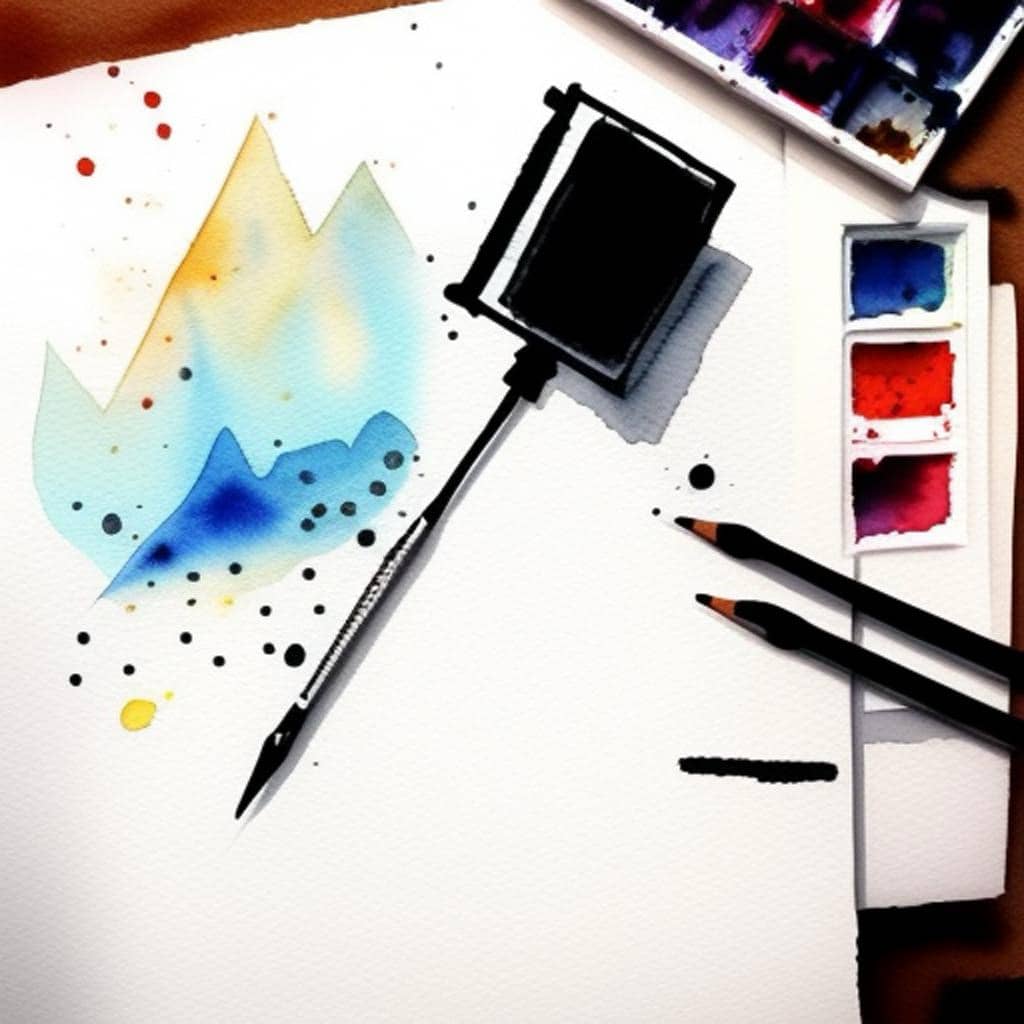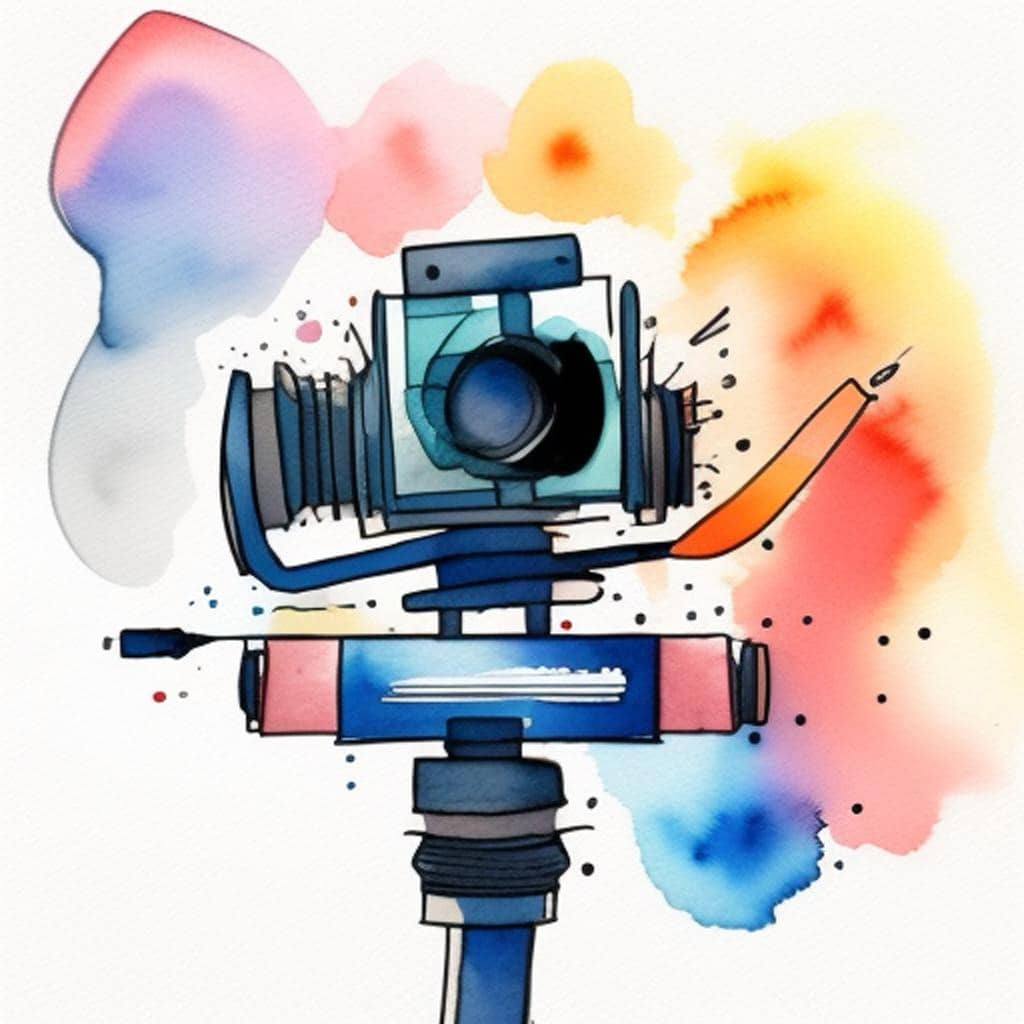
The Art of Video Production Capturing Creativity
This article reflects on the essence of the production stage, highlighting its role in bringing creative ideas to life through the medium of video. It emphasizes the process of capturing moments and turning them into a visual masterpiece.
The three stages of video production are the pre-production, production and post-production.
The Three Stages of Video Production
Video production is a complex and multifaceted process that transforms creative ideas into compelling visual narratives. At its core, it involves a meticulously orchestrated sequence of activities, each contributing to the final outcome—the video itself. These activities are structured into three distinct phases: pre-production, production, and post-production. These stages serve as the backbone of every successful video project, guiding filmmakers and content creators from initial concept to the polished final product.
In this exploration of the three stages of video production, we will delve into the purpose and significance of each phase, shedding light on the key tasks, challenges, and creative opportunities that arise at every step. Whether you’re a seasoned filmmaker or someone embarking on their first video project, understanding the intricacies of pre-production, production, and post-production is essential for achieving your vision and captivating your audience.
Join us on this journey as we break down the processes and unveil the magic behind the scenes. From brainstorming and scripting to capturing cinematic moments and fine-tuning every detail, these stages collectively shape the captivating stories and visual experiences that have become an integral part of our modern media landscape.
Let’s explore how each stage contributes to the creation of videos that inform, entertain, inspire, and leave a lasting impact on viewers around the world.
The three stages of video production—pre-production, production, and post-production—are crucial for creating high-quality videos. Let’s dive into each stage in more detail:
Pre-Productio Crafting the Blueprint of Creativity
In the realm of video production, the journey from concept to screen begins with a pivotal phase known as pre-production. Often likened to the planning and preparation phase, pre-production is where the seeds of creativity are sown, nurtured, and ultimately transformed into a comprehensive blueprint for the forthcoming video project.
During this initial stage, the creators and visionaries behind the camera lay the foundation upon which the entire production will stand. Every detail, from the script and casting choices to the choice of locations and budget considerations, is carefully curated to ensure that the final video aligns perfectly with the envisioned narrative or message.
In the pages that follow, we will embark on a voyage through the captivating world of pre-production. We will explore the diverse range of tasks that define this phase, such as scriptwriting, storyboarding, location scouting, casting, budgeting, and securing the essential equipment and permits. Each of these elements plays a critical role in shaping the direction and success of the project.
Pre-production isn’t merely a logistical necessity; it’s the canvas on which the artistry of video production begins to take shape. It’s where creativity meets planning, where ideas are given structure, and where the dreams of storytellers and filmmakers are methodically translated into a tangible plan of action.
Join us as we unravel the intricate process of pre-production, where imagination and organization converge to set the stage for a video project’s journey from conception to realization. Discover how this phase empowers creators to bring their visions to life with precision, ensuring that every frame, every line of dialogue, and every location chosen is a deliberate and calculated step toward cinematic excellence.
With pre-production as our compass, we embark on the adventure of crafting stories, messages, and experiences that will captivate and inspire audiences. Welcome to the pre-production stage—the genesis of cinematic magic.

Pre-Production: The Initial Planning Phase
Let’s extend on the significance and key tasks of the pre-production stage:
Before the cameras roll and the actors take their positions, there exists a crucial phase in video production that lays the very foundation of the entire project—pre-production. This is the genesis of the creative journey, the period where ideas are born and nurtured, and the roadmap for the video’s journey is carefully charted.
Concept Development: Breathing Life into Ideas
In the realm of pre-production, ideas are the seeds of creativity, and concept development is where they sprout. It’s the brainstorming sessions where creators gather to explore the purpose and goals of their video. What story needs to be told? What emotions should it evoke? Who is the intended audience? These are the questions that guide the development of a clear and compelling concept.
At this stage, the vision for the video is conceived, and the groundwork for storytelling is laid. Without a solid concept, the subsequent stages of production and post-production would lack direction and purpose.
Scriptwriting: The Blueprint of Storytelling
A well-crafted script is the blueprint of storytelling. It’s the backbone upon which the entire video production process rests. Scriptwriting involves translating the concept into dialogue, action, and narrative structure. The script not only provides the actors with their lines but also details camera angles, scene descriptions, and emotional nuances.
Every word on the page is a step closer to realizing the vision. It’s where the story takes shape, where characters find their voices, and where the narrative arc is carefully sculpted. Scriptwriting is both a craft and an art, where the power of words is harnessed to create memorable stories.
Storyboarding: Visualizing the Narrative
Storyboarding brings the script to life in a visual form. It’s the process of creating a series of illustrations or images that represent each scene in the video. Each storyboard frame is a snapshot of what the camera will capture—a visual guide for the director and the production team.
Storyboarding is instrumental in planning camera angles, shots, and transitions. It’s the first step in visualizing the director’s vision and ensuring that each moment in the video aligns with the intended narrative. It’s a roadmap that leads the way through the complexities of shooting and editing.
Location Scouting: The Quest for the Perfect Setting
The setting of a video is its backdrop, its stage, and its atmosphere. Location scouting is the process of finding suitable places to film, whether it’s a real-world location or a studio set. The chosen locations must harmonize with the video’s concept, providing the right ambiance and aesthetics.
During location scouting, considerations such as accessibility, lighting, and logistics are paramount. It’s about transforming a script’s descriptions into tangible environments, ensuring that every location chosen enriches the storytelling experience.
Casting and Hiring: Assembling the Dream Team
The actors, crew members, and talents behind the camera are the heart and soul of any video production. During pre-production, casting and hiring take center stage. Casting directors search for the perfect actors or on-screen talent who can bring characters to life and convey the intended emotions.
Simultaneously, hiring decisions are made for key roles such as the director, cinematographer, and production assistants. These individuals are the architects of the video’s visual and technical aspects, and their expertise is indispensable in translating the concept into reality.
Budgeting and Scheduling: The Pillars of Planning
Budgeting and scheduling are the pillars of effective planning during pre-production. A budget outlines the financial aspects of the project, including expenses for equipment, personnel, props, and more. It ensures that resources are allocated wisely and that the project remains within financial constraints.
Scheduling, on the other hand, is a meticulously crafted timeline that outlines when and where each scene will be filmed. It’s a roadmap that ensures the project stays on track, enabling efficient use of time and resources. A well-structured schedule is essential to prevent delays and budget overruns.
Equipment and Gear: Tools of the Trade
Pre-production is the phase where all the necessary equipment and gear are secured. Cameras, lighting equipment, sound recording devices, and props are among the tools of the trade that need to be carefully selected and prepared. Each piece of equipment is chosen to align with the concept and technical requirements of the project.
It’s during this stage that technical considerations meet creative intent. The choice of equipment can significantly impact the visual and auditory elements of the video, making it essential to select gear that complements the desired look and feel.
Permits and Legalities: Navigating the Regulatory Landscape
In the world of video production, regulatory requirements and legalities can be complex and diverse. Depending on the location and nature of the shoot, permits, licenses, and permissions may be necessary. Addressing these legal requirements during pre-production ensures a smooth and compliant production process.
Failure to secure the appropriate permits can result in delays, fines, or even the shutdown of a production. Therefore, meticulous attention to the legal aspects of video production is essential to avoid legal hurdles that may disrupt the creative flow.
In essence, pre-production is the birthing ground of creativity, where ideas become tangible plans, and plans evolve into the intricate blueprint for the entire video production journey. It’s a phase that demands meticulous attention to detail, a keen eye for creativity, and the alignment of every element toward a singular vision. Without the strong foundation laid during pre-production, the subsequent stages of production and post-production would lack the clarity and purpose needed to bring a video project to life.
Conclusion to Pre-Production: The Blueprint of Creative Vision
As we conclude our journey through the pre-production stage of video production, we find ourselves standing at the threshold of creative potential. This initial phase, often overlooked by viewers, is where the seeds of imagination take root and where meticulous planning gives wings to artistic vision.
Pre-production is the stage where dreams and ideas become tangible plans, where concepts are refined into scripts, and where the foundation is laid for what will soon become a captivating video. It’s a process that demands attention to detail, organizational prowess, and a keen eye for creativity—all vital ingredients in the recipe for a successful production.
In this phase, creators embark on a voyage of discovery, scouting locations, selecting talent, and setting budgets that will guide them through the production journey. It’s a stage of decision-making, where every choice, from the angle of a camera to the casting of a character, plays a vital role in bringing the story to life.
But pre-production is more than just logistics; it’s the crucible of artistic intention. It’s where the visionaries behind the camera set the tone for the project, defining the mood, style, and narrative structure. It’s a playground where creativity meets practicality, where blueprints are crafted for the artistry that lies ahead.
As we bid farewell to the pre-production phase, we carry with us an appreciation for the art of preparation and the significance of planning in the world of video production. It’s a reminder that every masterpiece begins with a blank canvas and a vision. Pre-production is where that canvas is filled with the initial strokes of creativity, and where the foundation is laid for the remarkable journey that lies ahead in production and post-production.
In the pages that follow, we will delve deeper into the intricacies of video production, exploring the magical moments captured on set and the painstaking artistry of post-production. But let us not forget that it all began here, in the realm of pre-production, where ideas became plans, and plans became the stepping stones to cinematic excellence.
Introduction to Production: Breathing Life into the Vision
With the canvas of pre-production carefully painted and the brushstrokes of creativity poised, we step into the exhilarating heart of video production—aptly named “production.” It is here that the meticulously laid plans, scripts, and storyboards are set in motion, bringing forth the magic of storytelling through the lens of the camera.
Production is the heartbeat of the entire process, where a confluence of talent, technology, and imagination converges. It’s a time when actors breathe life into characters, when scenes spring to life in vivid color, and when the director’s vision takes its first steps towards realization.
In the following chapters, we embark on an enchanting exploration of the production stage, delving deep into its intricate tapestry. We’ll witness the creative synergy between the cast and crew, the choreography of camera movements, and the orchestration of lighting and sound that together breathe life into the narrative.
Production is more than just the mechanical act of capturing images and sound; it’s the manifestation of artistic intent. It’s where the chemistry between actors creates authentic emotions, where the selection of camera angles conveys perspective, and where each frame is an opportunity to craft visual poetry.
As we embark on this journey, we’ll celebrate the art of filmmaking that unfolds during the production phase. We’ll witness the dedication, collaboration, and creative alchemy that transpires on set, as each member of the team plays their part in bringing stories to life.
So, step into the world of production, where imagination finds its stage, and where the director’s vision is set into motion. It’s a world of energy, passion, and endless possibilities, where every moment captured on camera is a brushstroke on the canvas of cinematic storytelling.

Production: Where Pre-Production Plans Come to Life
Production is the heartbeat of video creation, the phase where meticulously crafted pre-production plans burst into action. It’s the juncture where creativity is set in motion, where words on a script become scenes in reality, and where the magic of storytelling starts to unfold.
Shooting: Giving Life to the Script and Storyboard
The core of production lies in shooting—the process of capturing the meticulously planned scenes. It’s a harmonious ballet of technology and artistry. The camera is set up meticulously, positioned to frame each shot as envisioned in the storyboard. The lighting is carefully orchestrated to play with shadows, creating depth and mood. Sound equipment is poised to capture the nuances of dialogue, ambient noise, and every rustle of fabric.
Behind the lens, actors breathe life into characters, delivering lines that have been carefully crafted during pre-production. Each take is a step closer to perfection, a moment in time that will be stitched together in post-production to create a seamless narrative. The act of shooting is where raw moments become captured emotions, where the story comes to life in its visual form.
Directing: The Guiding Hand of Creativity
The director, often the captain of the ship, plays a pivotal role during the production phase. Their vision, which was nurtured during pre-production, takes center stage. They guide the actors, helping them delve deep into their characters, eliciting emotions that resonate with the story. Directors make creative decisions on the fly, adjusting the scenes to capture the essence of each moment.
In many ways, the director is the storyteller, ensuring that the narrative’s emotional beats, pacing, and atmosphere align with the pre-determined vision. Their direction ensures that the actors’ performances are in harmony with the script and storyboard, creating a cohesive and engaging cinematic experience.
Cinematography: Crafting Visual Poetry
Cinematographers are the visual poets of production. They frame shots like a painter chooses the perfect stroke of the brush, seeking to convey mood, theme, and perspective through every frame. Their expertise lies in capturing visually appealing footage that transcends the ordinary. They adjust camera settings, lenses, and angles to create compositions that are both technically proficient and artistically striking.
From sweeping panoramic shots that establish a sense of place to intimate close-ups that reveal the characters’ emotions, cinematographers are instrumental in shaping the viewer’s connection to the story. Their careful orchestration of visuals is what allows an audience to experience a story not just through words but through the language of images.
Sound Recording: Capturing the Unseen Emotions
While the camera captures the visible elements of a scene, sound engineers capture the invisible. High-quality audio is just as vital as compelling visuals in video production. Sound recording specialists ensure that every word, every sound effect, and every ambient noise is captured with precision. This meticulous attention to audio quality ensures that viewers are immersed in the story, hearing the subtle nuances of emotion in every line of dialogue.
Sound recording is about more than just technical proficiency; it’s about harnessing the power of sound to evoke emotions and enhance storytelling. It’s the rustle of leaves in a suspenseful moment, the soft sigh in a heartfelt conversation, and the thunderous roar in an action-packed sequence. Every sound adds depth to the narrative tapestry.
Logging and Organizing Footage: The Backbone of Post-Production
As the camera rolls and scenes unfold, the importance of organized documentation becomes evident. Logging and organizing footage is a meticulous task, but it is the backbone of the post-production process. It involves labeling and categorizing each clip, noting takes and timestamps, and ensuring that all recorded material is easily accessible for the editor and the post-production team.
This step’s significance cannot be overstated, as it streamlines the editing process and ensures that the director’s vision can be seamlessly realized in the final product. The attention to detail in logging and organizing footage ensures that no moment is lost, no emotion overlooked, and that the storytelling process remains as fluid as possible.
In essence, production is where the script and storyboard transcend paper and imagination to become living, breathing moments captured on film. It’s a symphony of creativity and technical proficiency, where each member of the production team plays a crucial role in bringing a director’s vision to life. It’s a moment in time when the magic of storytelling unfolds before our very eyes, and it is the catalyst that propels us into the captivating realm of post-production, where the true artistry of filmmaking takes shape.
Conclusion to Production: Capturing Creativity in Motion
As we wrap up our exploration of the production stage in video production, we find ourselves amidst the vibrant tapestry of creative energy and technical expertise. This phase, often characterized by the hustle and bustle of cameras, lights, and action, is where the magic of storytelling truly takes flight.
Production is the heartbeat of video creation, the juncture where meticulously planned scenes come to life through the lens. It’s a time when actors breathe life into characters, when the director’s vision is translated into frames, and when the world within the script unfolds before our eyes.
In this phase, the tangible manifestation of creative intent occurs. The carefully chosen locations become cinematic backdrops, the actors embody the roles envisioned in the script, and every crew member plays a crucial part in orchestrating the visual symphony of storytelling.
But production is not just about technical prowess; it’s an arena where spontaneity meets meticulous planning. It’s about capturing the fleeting moments of authenticity and emotion that make a scene unforgettable. It’s a dynamic dance of timing, coordination, and creative finesse.
As we bid adieu to the production stage, we carry with us a profound appreciation for the dedication and collaboration of the entire team. Each member, from the director to the cinematographer, from the actors to the production crew, contributes their unique talents to craft moments of cinematic brilliance.
In the notes that follow, we will journey deeper into the realm of video production, where the raw footage captured during this phase will be transformed into a polished masterpiece during post-production. But let us not forget that it all began here, on the set, amidst the lights and cameras, where creativity found its voice in motion and where the foundation was laid for the final act.
Production, in its essence, is the bridge that connects the dreams of storytellers with the realities of cinematic artistry, reminding us that every frame is a canvas, every actor a muse, and every scene a chance to captivate the hearts and minds of an audience.
Introduction to Post-Production: Shaping the Vision into Reality
After the cameras have captured the carefully planned scenes, and the actors have delivered their lines, the journey of a video project enters its transformative phase known as post-production. Often regarded as the heart and soul of filmmaking, this critical stage is where raw footage and recorded audio are sculpted into the polished and captivating final product that audiences will ultimately experience.
Post-production is a realm where creativity knows no bounds. It is a space where editors, sound engineers, visual effects artists, and colorists weave their magic, breathing life into the director’s vision. It is a sanctuary of meticulous detail, where every frame, every cut, and every note of music is considered and perfected.
In the pages that follow, we embark on a mesmerizing exploration of post-production, unveiling the intricacies and artistry that lie beneath the surface. From the craft of video editing to the alchemy of sound mixing and the wizardry of visual effects, each component plays an integral role in refining the storytelling experience.
But post-production isn’t solely about technical expertise; it’s a symphony of creativity and precision. It’s about finding the perfect balance between visual and auditory elements, about coloring scenes to evoke specific emotions, and about sculpting soundscapes that transport viewers into the narrative.
Join us as we journey into the captivating world of post-production, where the power of storytelling is harnessed through the manipulation of imagery and sound. Discover how this phase is the crucible where creativity is refined, and where the dreams of filmmakers reach their pinnacle. It’s where stories are not just told but brought to life with a vibrancy that lingers long after the screen fades to black.
With post-production as our guide, we explore the art of crafting memorable and emotionally resonant videos. Welcome to the world of post-production—the canvas where the director’s vision is painted with the brushstrokes of cinematic artistry.

Post-Production: Where It Is All Shaped and Refined
Let’s delve deeper into the significance and key tasks of the post-production stage:
After the cameras have stopped rolling and the final scene is captured, a different kind of magic unfolds in the realm of post-production. This is the phase where the raw footage, laden with potential, is transformed into a polished, cohesive, and emotionally resonant final product.
Video Editing: Weaving the Visual Tapestry
At the heart of post-production lies the art of video editing. Editors are the architects of the video, assembling the puzzle pieces of raw footage into a seamless and engaging narrative. They trim scenes for pacing, add transitions for flow, and make creative decisions to enhance storytelling.
Video editing is not just about joining clips; it’s about crafting emotions, constructing meaning, and guiding the audience’s journey. Editors are the storytellers in this stage, shaping the narrative’s arc and ensuring that every frame serves a purpose.
Sound Editing and Mixing: The Harmonious Symphony
While the visuals captivate the eye, sound editors and mixing engineers work their magic to captivate the ear. Sound editing involves cleaning up and enhancing audio quality, removing unwanted noise, and ensuring that every word is crystal clear. It’s about creating an auditory landscape that complements the visual experience.
Mixing engineers take it a step further, balancing and blending sound elements to achieve optimal clarity and impact. The sound of footsteps, the rustling of leaves, the dramatic score—all must harmonize to immerse the audience fully into the story.
Visual Effects (VFX) and Graphics: Crafting Visual Wonders
If the video calls for visual effects, animations, or graphics, this is where the magic happens. Visual effects artists use cutting-edge technology to create breathtaking illusions, transporting viewers to fantastical realms or realizing scenes that are otherwise impossible to capture.
Graphics, on the other hand, can provide context, information, or branding. Whether it’s motion graphics, titles, or infographics, they add depth and meaning to the visuals, enhancing the overall storytelling experience.
Color Grading: Painting with Light
Colorists are the painters of post-production, using color grading to set the mood and tone of the video. They adjust the color and tone of each frame to achieve a consistent and visually appealing look. Color grading can transform a scene from day to night, evoke nostalgia or suspense, and elevate the visual aesthetics to cinematic heights.
It’s through color grading that the video’s visual identity comes to life, creating a cohesive and emotionally charged atmosphere.
Music and Soundtrack: The Soulful Symphony
Music has the power to stir emotions, and in post-production, composers or music supervisors select or create music that fits the mood and tone of the video. The soundtrack breathes life into the narrative, enhancing its emotional impact.
The choice of music, whether it’s an original composition or a licensed track, can elevate the storytelling experience, guiding the audience’s emotions and leaving a lasting impression.
Final Review and Revisions: The Pursuit of Excellence
In the pursuit of excellence, post-production often involves multiple rounds of review and feedback. This collaborative process ensures that every aspect of the video, from visuals to sound, aligns with the intended vision. Revisions are made to refine the video until it meets the desired quality standards.
This stage is where every detail is scrutinized, every frame perfected, and every note harmonized to create a compelling and unforgettable final product.
Export and Delivery: Ready for the World
Once the video is a masterpiece in its own right, it’s time for the grand unveiling. It’s exported into the appropriate format for distribution on chosen platforms—be it broadcast television, online streaming, or other mediums. This step ensures that the video reaches its intended audience, ready to captivate hearts and minds.
In essence, post-production is the transformative phase where raw potential becomes cinematic excellence. It’s where creativity meets technical prowess, where storytelling takes its final form, and where the video is refined to a level of sophistication that ensures its place in the annals of visual storytelling. It is the culmination of a creative journey, where all the elements harmonize to create a masterpiece that lingers in the hearts of viewers long after the final frame fades to black.
Conclusion to Post-Production: The Artistry of Cinematic Craftsmanship
As we draw the curtains on our exploration of the post-production stage in video production, we find ourselves in the midst of a realm where artistry and technical mastery converge to create cinematic wonders. Post-production is the alchemical process where raw footage and recorded sound are transformed into a symphony of visual and auditory delights.
This phase is a sanctuary of creativity, where editors sculpt narratives, sound engineers weave auditory tapestries, and visual effects artists conjure visual magic. It’s a space where colors are carefully crafted to evoke emotions, where music is composed to touch the soul, and where every frame is scrutinized to ensure it aligns with the director’s vision.
In post-production, the story truly comes to life. It’s where the pieces of the puzzle fit together, where scenes are seamlessly connected, and where the mood and atmosphere are meticulously crafted. It’s a process of refining, perfecting, and elevating the captured moments into a compelling and immersive experience for the audience.
But post-production is more than just technical finesse; it’s the culmination of creative intent. It’s the moment when the director’s vision is fully realized, and the potential of the raw footage is unlocked. It’s where the emotional impact of a scene is heightened through sound design, where visual effects transport viewers to otherworldly realms, and where the magic of storytelling is finely tuned.
As we bid farewell to the post-production stage, we carry with us a deep appreciation for the unsung heroes behind the scenes—the editors, sound engineers, colorists, and visual effects artists—who craft the final tapestry of cinematic excellence. It’s a reminder that every frame, every sound, and every visual element is a brushstroke on the canvas of storytelling.
In the chapters that follow, we will venture into the world of distribution and audience engagement, where the meticulously crafted video will find its place in the hearts and minds of viewers. But let us not forget that it all began here, in the realm of post-production, where creativity reached its zenith, and where the director’s vision was brought to fruition with unparalleled craftsmanship.
Post-production is a testament to the power of storytelling, reminding us that every cut, every sound, and every visual choice is a deliberate step toward creating a lasting impact in the world of cinema.
Conclusion: The Triumphant Symphony of Video Production
Video production is an intricate symphony, composed of three distinct movements: pre-production, production, and post-production. Each stage plays a vital role in transforming creative ideas into captivating visual narratives. Collaboration among a diverse array of professionals is the cornerstone of this harmonious process, ensuring that the final product achieves its intended goals and objectives.
Pre-Production: The Birth of Vision
In the pre-production phase, the seeds of creativity are sown. Ideas take shape, scripts are penned, and storyboards become visual blueprints. This initial planning phase is the crucible where clarity of concept and purpose is forged. Locations are scouted, talents are chosen, and budgets are established. It is here that the vision for the video takes its first breath, setting the course for the entire production journey.
Production: Breathing Life into Ideas
Production is where the vision conceived in pre-production is brought to life. Cameras roll, actors step into their roles, and scenes are captured in vivid detail. The director guides the creative process, while cinematographers frame moments, and sound engineers capture emotions. The synergy between technical proficiency and artistic expression is at its peak during this phase. It is the moment when creativity takes center stage, and the video’s heartbeat is felt in every take.
Post-Production: The Refinement of Artistry
After the cameras cease their dance, post-production becomes the crucible of refinement. Editors sculpt raw footage into a coherent narrative, sound engineers craft auditory symphonies, and visual effects artists create stunning illusions. Colorists paint with light, composers infuse emotions with music, and every detail is honed in multiple rounds of review. It is the phase where the video’s soul is revealed, and it is here that cinematic excellence is born.
Each of these three stages is a crucial note in the symphony of video production. They are not solitary entities but interconnected movements, where the creative baton passes from one to the other, forging a seamless and immersive storytelling experience. Collaboration among writers, directors, cinematographers, editors, sound engineers, and countless others is the secret behind this triumphant symphony.
In the end, video production is more than just a technical process; it is the alchemy of ideas and craftsmanship. It is the art of breathing life into stories, capturing moments, and evoking emotions. And when these three stages—pre-production, production, and post-production—come together in harmonious collaboration, the result is a triumphant symphony that resonates with audiences, leaving a lasting impact on hearts and minds. It is the ultimate testament to the power of visual storytelling and the collective talent and dedication of the video production team.
Three Stages of Video Production and Key Tasks
Video Production Process Resumed in a table
| Stage | Pre-Production | Production | Post-Production |
| Key Tasks | – Concept Development – Scriptwriting – Storyboarding – Location Scouting – Casting and Hiring – Budgeting and Scheduling – Equipment and Gear- Permits and Legalities | – Shooting – Directing – Cinematography – Sound Recording – Logging and Organizing Footage | – Video Editing – Sound Editing and Mixing – Visual Effects (VFX) and Graphics – Color Grading – Music and Soundtrack – Final Review and Revisions – Export and Delivery |
| Description | – Develop the video concept and vision. – Write the script. – Create visual scene layouts. – Find suitable shooting locations. – Cast actors and hire crew. – Establish a budget and schedule. – Secure necessary equipment. – Address legal requirements. | – Capture video footage according to the script. – Guide actors and make creative decisions. – Frame shots and operate cameras. – Record high-quality audio. – Organize recorded footage. | – Assemble and edit video footage. – Edit and enhance audio. – Add visual effects and graphics. – Adjust color and tone. – Select or create music. – Review and revise the video. – Export for distribution. |
This table provides a concise overview of the three stages of video production and their key tasks.






